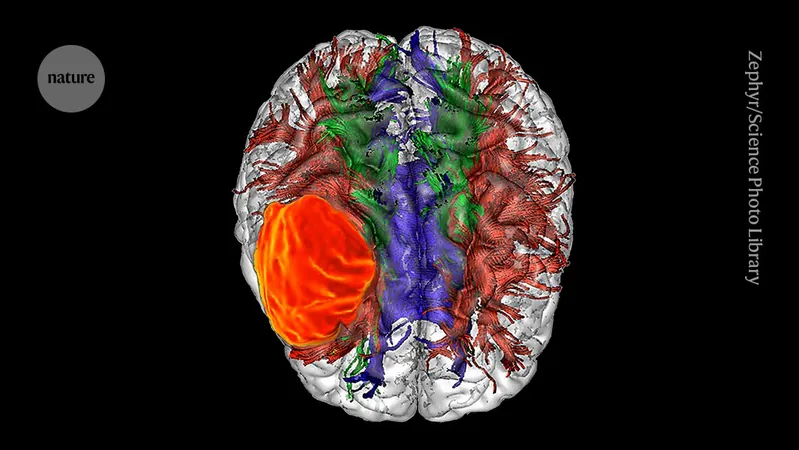
Starving Brain Tumors: A Breakthrough Discovery That Could Change Cancer Treatment
2025-09-03
Author: Wei Ling
Unmasking Glioblastomas' Vulnerability
Researchers have discovered a groundbreaking strategy to slow the relentless growth of glioblastomas, one of the deadliest forms of brain tumors. These aggressive cancers are notorious for their ability to commandeer vital nutrients, particularly a critical amino acid known as serine. By starving these tumors of serine, scientists have found a way to exploit this metabolic weakness.
A Game-Changer for Treatment
In a study conducted on mice with glioblastoma, scientists fed the animals a serine-free diet and observed remarkable results. The tumors, deprived of their usual nutrient source, grew at a significantly slower rate, and the mice lived longer than those on a regular diet. Neurosurgeon and researcher Sheila Singh hailed this work as a crucial advance, emphasizing its potential for developing innovative therapeutic strategies.
The Ruthless Nature of Glioblastomas
Glioblastomas are not only aggressive but also cunning, invading brain tissue with alarming speed and often regrowing after standard treatments like surgery combined with chemotherapy and radiation. Unfortunately, the prognosis for those diagnosed is grim, with most surviving only 1 to 2 years.
The Great Nutrient Heist
These tumors are experts at siphoning resources from their surroundings. They extract sugars and other vital nutrients, utilizing these to fuel their own growth. Co-author Andrew Scott, a cancer neuroscientist, explains the relentless nature of these tumors: "They will do whatever it takes to grow and grow and grow."
A Study of Tumor Behavior
To further understand glioblastomas' survival tactics, researchers analyzed tumor samples from eight patients who underwent surgery. During the procedure, surgeons infused patients with sugar molecules tagged with a carbon isotope. This innovative method allowed scientists to track how some glioblastomas used surrounding sugars to create essential components like DNA, facilitating their rapid growth.
A Hopeful Future
Published on September 3 in the journal Nature, this research offers a glimmer of hope in the fight against one of the most challenging cancers. By targeting glioblastomas' reliance on serine, this new approach could pave the way for more effective treatments, potentially extending the lives of countless patients battling this ruthless disease.


 Brasil (PT)
Brasil (PT)
 Canada (EN)
Canada (EN)
 Chile (ES)
Chile (ES)
 Česko (CS)
Česko (CS)
 대한민국 (KO)
대한민국 (KO)
 España (ES)
España (ES)
 France (FR)
France (FR)
 Hong Kong (EN)
Hong Kong (EN)
 Italia (IT)
Italia (IT)
 日本 (JA)
日本 (JA)
 Magyarország (HU)
Magyarország (HU)
 Norge (NO)
Norge (NO)
 Polska (PL)
Polska (PL)
 Schweiz (DE)
Schweiz (DE)
 Singapore (EN)
Singapore (EN)
 Sverige (SV)
Sverige (SV)
 Suomi (FI)
Suomi (FI)
 Türkiye (TR)
Türkiye (TR)
 الإمارات العربية المتحدة (AR)
الإمارات العربية المتحدة (AR)